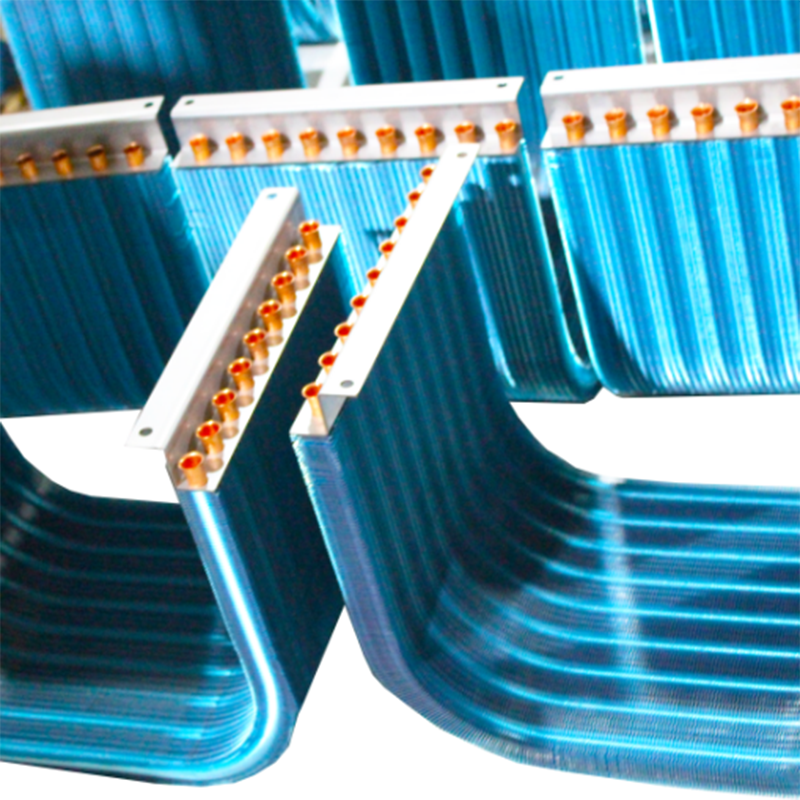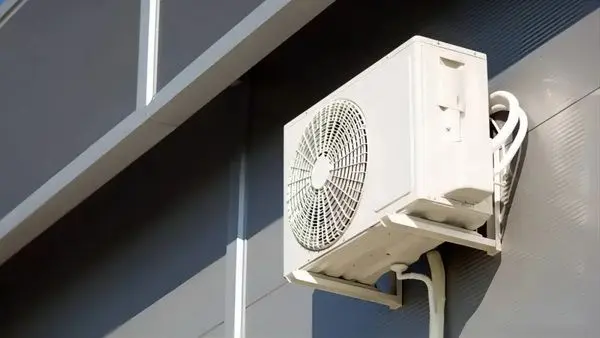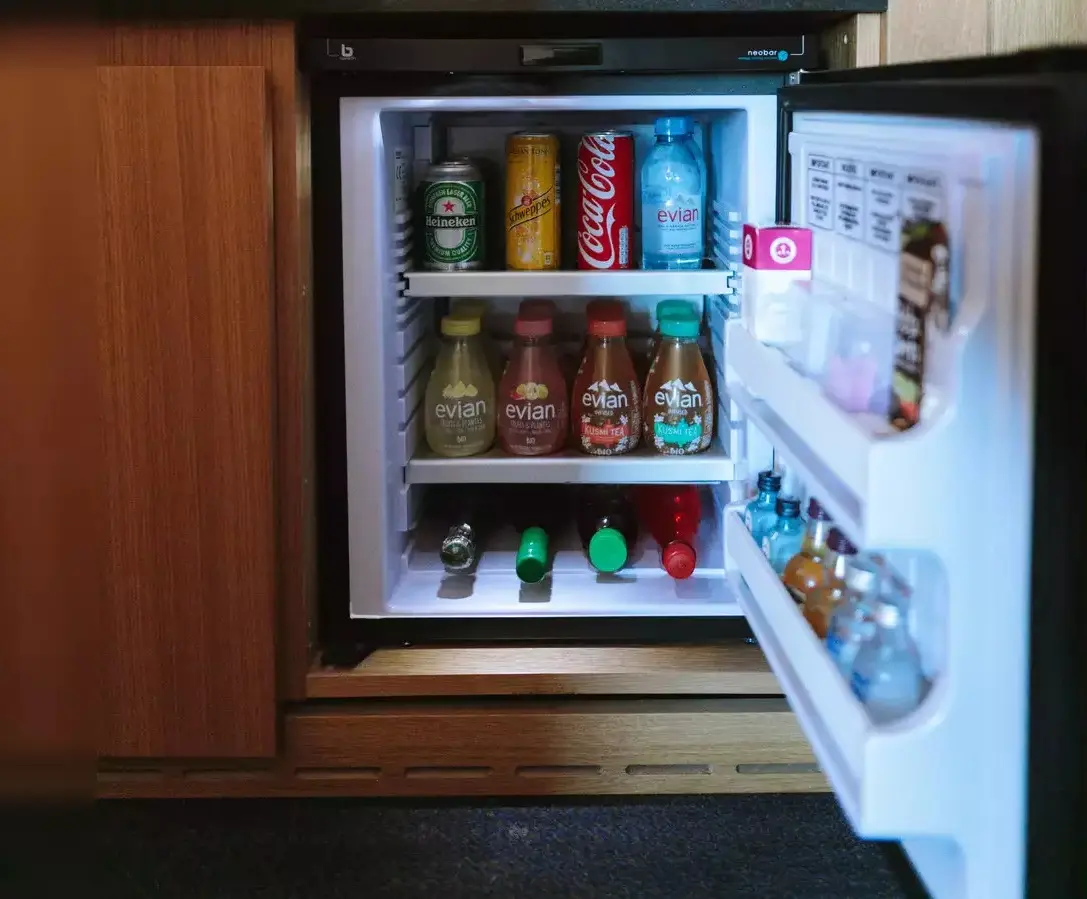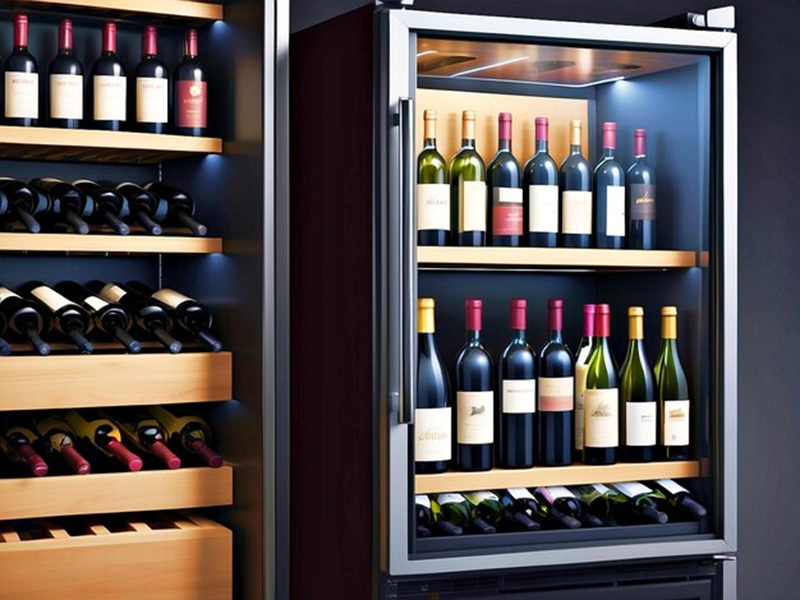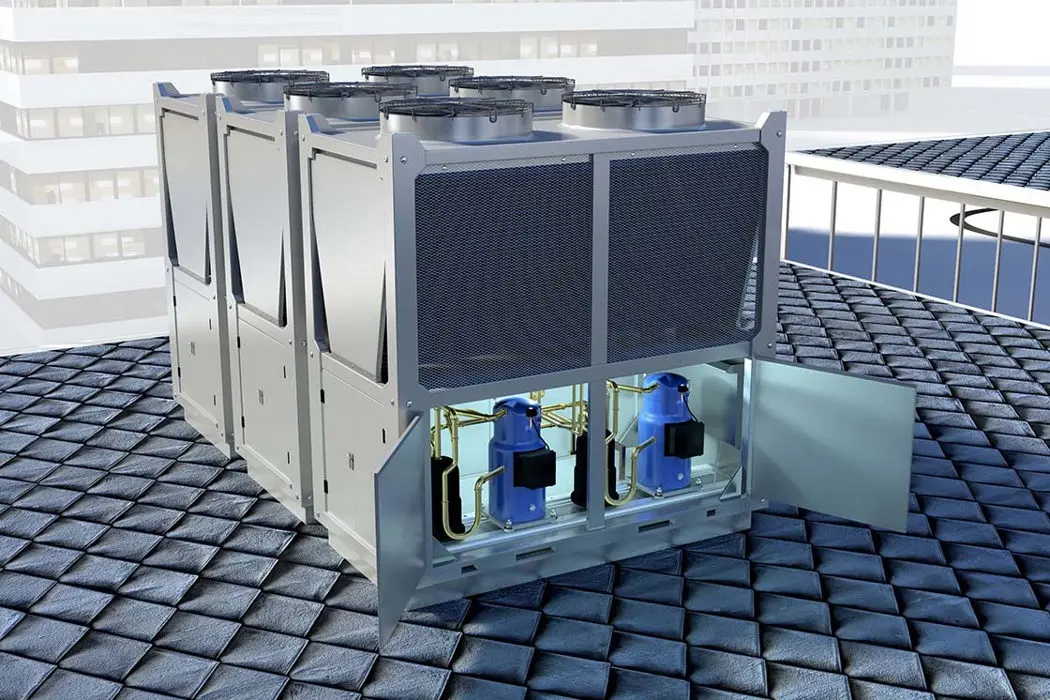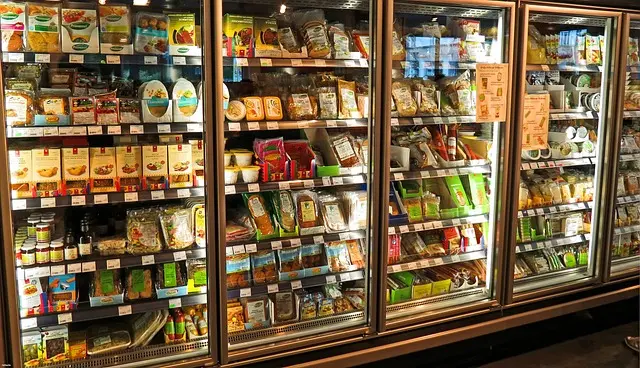2025 Refrigeration Parts Price War: Survival Strategies for SMEs

The 2025 Refrigeration Parts price war has created a challenging landscape for SMEs. I’ve seen firsthand how shrinking profit margins and unpredictable supply chains can destabilize small businesses. Proactive measures, like cost management and innovation, are essential for survival. For instance, understanding the role of components like thewire tube condenser can offer a competitive edge.
Key Takeaways
- Cutting costs is very important. Small businesses should check their work processes to find waste and lower spending, especially on energy and repairs.
- Having different ways to earn money makes businesses stronger. Small businesses should try new markets and services to avoid depending on just one way to make money.
- Using technology can make work easier. Using smart devices and data tools helps small businesses use resources wisely and compete better in tough times.
Overview of the 2025 Refrigeration Parts Price War
Causes of the Price War
The 2025 refrigeration parts price war stems from several critical factors. Tariff increases on imports from China, a major supplier of HVAC components, have created immediate cost pressures. These tariffs have disrupted supply chains and forced businesses to reevaluate sourcing strategies. Rising inflation and labor shortages have further compounded the issue, driving up production costs. Additionally, the escalating prices of raw materials have left manufacturers with little choice but to pass these costs onto customers. I’ve observed how these challenges have created a ripple effect, impacting every player in the industry, from large manufacturers to small and medium-sized enterprises (SMEs).
Market Dynamics and Competitive Pressures
The refrigeration parts market is undergoing a significant transformation. Tariffs on imported equipment have prompted manufacturers to explore near-sourcing alternatives, which often come with higher upfront costs. Domestic manufacturers are leveraging these protective measures to gain market share, intensifying competition. This shift has placed a spotlight on total cost of ownership, as businesses seek long-term value over short-term savings. Technological advancements are also reshaping the landscape, with innovations like the wire tube condenser playing a pivotal role in improving energy efficiency and reducing operational costs. These dynamics have created a fiercely competitive environment where adaptability is key.
Challenges Faced by SMEs
SMEs face unique challenges in this volatile market. High initial investment costs deter many from upgrading their refrigeration systems, leaving them reliant on outdated technology. Stringent environmental regulations add another layer of complexity, requiring significant financial and operational adjustments. I’ve seen how these factors can strain resources and limit growth opportunities for smaller businesses. Navigating these challenges requires a strategic approach, focusing on cost optimization and building strong supplier relationships to ensure access to essential components like the wire tube condenser.
Key Survival Strategies for SMEs
Cost Optimization
Cost optimization is the cornerstone of survival during a price war. I’ve seen how even small adjustments can lead to significant savings. For SMEs in the refrigeration parts sector, energy consumption alone accounts for 50-60% of overall costs. Maintenance strategies can reduce repair-related expenses by up to 30%, while transportation costs can be minimized through route optimization.
| Cost Factor | Impact on Costs |
|---|---|
| Energy Consumption | Accounts for 50-60% of overall costs |
| Maintenance | Can reduce repair-related expenses by up to 30% |
| Transportation | Route optimization can lower fuel costs significantly |
To achieve these savings, SMEs should adopt cost-regression analysis to identify inefficiencies in their operations. Target price identification can help negotiate better deals with suppliers, while complexity reduction streamlines product offerings to focus on high-margin items. These methods not only cut costs but also improve operational efficiency, ensuring SMEs remain competitive in a volatile market.
| Evidence Type | Description |
|---|---|
| Cost-regression analysis | This method helps SMEs identify opportunities to reduce costs by analyzing the cost position of suppliers. |
| Target price identification | By calculating the difference between purchase prices and target prices, SMEs can negotiate better deals. |
| Complexity reduction | Identifying less competitive parts can streamline offerings and reduce costs in the product line. |
Diversification of Revenue Streams
Relying on a single revenue stream during a price war is risky. I’ve observed how SMEs that diversify their income sources can better withstand market fluctuations. Exploring new markets, such as Latin America, Africa, and Eastern Europe, offers opportunities to tap into regions with favorable trade relationships. Additionally, shifting towards service-oriented offerings, like software-as-a-service (SaaS) or consulting, can reduce exposure to tariffs on physical goods.
For example, an SME specializing in refrigeration parts could expand its portfolio to include maintenance services or energy-efficiency consultations. This approach not only generates additional revenue but also strengthens customer loyalty by offering a comprehensive solution. Diversification ensures that SMEs are not overly reliant on a single market or product line, making them more resilient during economic downturns.
Leveraging Technology
Technology is a game-changer for SMEs navigating the complexities of a price war. I’ve seen how advancements like IoT sensors and analytics can revolutionize operations. These tools enable better resource management, such as water conservation and energy efficiency. Smart water metering, for instance, allows businesses to identify leaks in real-time, reducing waste and lowering costs.
- IoT sensors and analytics enable better water management, leading to conservation of resources.
- Smart water metering allows for quick identification of leaks, providing real-time data for users.
- The integration of IoT with AI and ML optimizes power grids and predicts maintenance needs, enhancing operational efficiency.
By integrating IoT with AI and machine learning, SMEs can optimize their supply chains, predict maintenance needs, and improve overall efficiency. These technologies not only reduce operational costs but also provide a competitive edge in a crowded market. For example, incorporating a wire tube condenser with IoT-enabled monitoring can enhance energy efficiency, further reducing costs.
Building Strong Customer Relationships
Strong customer relationships are vital for SMEs to thrive amid competitive pressures. I’ve found that focusing on customer satisfaction and loyalty can significantly impact business performance. Setting measurable objectives, such as tracking customer acquisition costs (CAC) and sales pipeline velocity, helps monitor progress effectively.
- Customer Acquisition Cost (CAC): Monitor monthly.
- Sales Pipeline Velocity: Check weekly.
- Employee Satisfaction: Measure quarterly.
| Outcome | Description |
|---|---|
| Adoption of CRM | Influenced by customer and competitive pressures, leading to improved customer satisfaction. |
| Customer Pressure | Urges firms to adopt new technologies, impacting e-customer relationship management adoption. |
Using data analytics to gain insights into customer behavior allows SMEs to make informed decisions. For instance, adopting a customer relationship management (CRM) system can streamline communication and improve service quality. Building trust and loyalty ensures repeat business, which is crucial during a price war. By prioritizing customer needs, SMEs can differentiate themselves from competitors and secure a stable revenue base.
Role of Wire Tube Condensers in the Industry
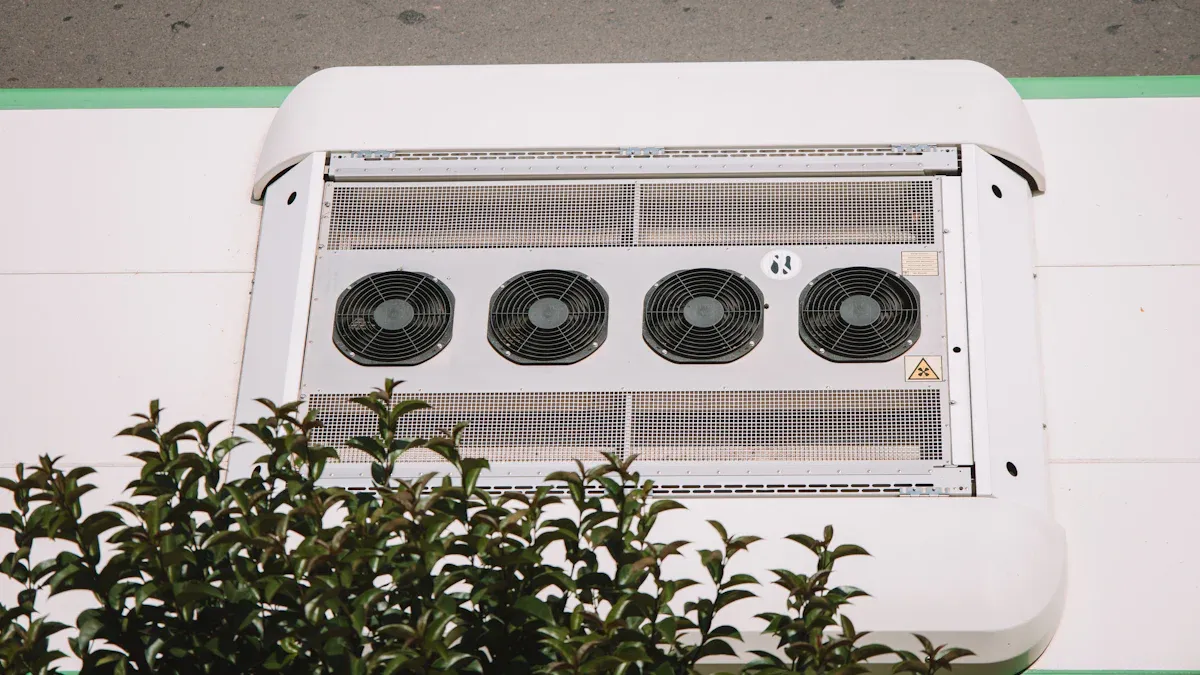
Importance of Wire Tube Condensers in Refrigeration Systems
Wire tube condensers play apivotal role in refrigeration systems. Their design, featuring coiled copper tubing surrounded by tightly wound metal wires, enhances both thermal conductivity and structural stability. This configuration increases the heat dissipation surface area, which improves cooling efficiency significantly.
- Wire tube condensers utilize coiled copper tubing that excels in thermal conductivity.
- The tightly wound metal wires enhance structural stability and durability.
- The increased surface area facilitates better heat dissipation, optimizing cooling performance.
In refrigeration cycles, these condensers perform essential functions. They cool and condense high-temperature, high-pressure gaseous refrigerant discharged from the compressor. This process prepares the refrigerant for throttling and evaporation, enabling efficient heat absorption during the cycle.
- Cool and condense the refrigerant discharged from the compressor.
- Prepare the refrigerant for subsequent processes like throttling and evaporation.
- Facilitate heat absorption during the refrigeration cycle.
Performance statistics further highlight their importance. For instance, at 25°C, the coefficient of performance (COP) for vapor compression refrigeration systems (VCRS) reaches 3.82, showcasing their efficiency in maintaining optimal temperatures.
| Temperature (°C) | COP (VCRS) | COP (PV/T-VCRS) |
|---|---|---|
| 25 | 3.82 | 3.66 |
| 30 | 3.40 | 3.17 |
Senjun’s Contribution to the Market
Senjun has established itself as a leader in the wire tube condenser market. I’ve seen how their commitment to research and development has driven innovation in refrigeration systems. Senjun specializes in producing wire tube condensers and copper aluminum fin heat exchangers for various applications, including refrigerators, freezers, and medical ultra-low temperature refrigerators.
Their products are designed to meet the diverse needs of industries, from food storage to healthcare. By prioritizing energy efficiency and durability, Senjun ensures that their condensers deliver consistent performance under demanding conditions. Their expertise in manufacturing high-quality components has earned them a reputation for reliability and excellence in the global market.
Strategic Partnerships with Suppliers
Building strong partnerships with suppliers is crucial for SMEs navigating the price war. I’ve observed how collaborations with trusted manufacturers like Senjun can secure access to high-quality wire tube condensers. These partnerships reduce supply chain risks and ensure consistent product availability.
Senjun’s focus on innovation and quality makes them an ideal partner for SMEs. Their ability to adapt to market demands and provide tailored solutions strengthens the competitive position of their clients. By fostering long-term relationships with suppliers, SMEs can achieve cost stability and maintain operational efficiency during volatile market conditions.
Case Studies or Examples
Real-Life Example of an SME Navigating a Price War
I recall a small refrigeration parts supplier in Eastern Europe that successfully navigated a price war by adopting a multi-pronged strategy. The company faced intense competition from larger players offering steep discounts. Instead of engaging in a race to the bottom, they focused on optimizing their operations and building customer loyalty.
They began by conducting a thorough cost analysis to identify inefficiencies. By streamlining their supply chain and renegotiating contracts with suppliers, they reduced procurement costs by 15%. Additionally, they invested in IoT-enabled monitoring systems for their refrigeration units, which improved energy efficiency and cut operational expenses.
Customer relationships became their cornerstone. They implemented a CRM system to track client preferences and offer personalized solutions. This approach not only increased customer retention but also boosted their reputation as a reliable partner. Their ability to adapt and innovate allowed them to maintain profitability despite the challenging market conditions.
Hypothetical Scenario: Applying Strategies to Succeed
Imagine an SME specializing in wire tube condensers facing a sudden spike in raw material costs. By leveraging data-driven decision-making and scenario planning, they could mitigate risks and optimize resources.
| Scenario Type | Description |
|---|---|
| Data-Driven Decision Making | Simulating customer behavior to forecast demand for energy-efficient condensers. |
| Risk Assessment and Mitigation | Testing the impact of raw material price hikes on profit margins and identifying cost-saving measures. |
| Optimization of Resources | Simulating production schedules to minimize waste and maximize output. |
| Scenario Planning | Preparing for supply chain disruptions by identifying alternative suppliers. |
| Innovation Testing | Evaluating the adoption rate of IoT-enabled condensers to determine market viability. |
These strategies would enable the SME to remain competitive, even in a volatile market. By proactively addressing challenges, they could secure their position and thrive during the price war.
Actionable Steps Checklist

Step-by-Step Guide for SMEs to Prepare
Preparing for market disruptions like the 2025 refrigeration parts price war requires a structured approach. I’ve found that a systematic framework can help SMEs navigate uncertainty and maintain stability. Here’s a step-by-step guide to get started:
- Assess Current Operations: Begin by evaluating your existing processes and identifying inefficiencies. This includes analyzing energy consumption, supply chain vulnerabilities, and product performance.
- Develop a Disruption Management Framework: Create a process framework tailored to your business needs. This should outline how to respond to low-probability, high-impact events, such as sudden price hikes or supply chain disruptions.
- Prioritize Key Products and Services: Focus on the items that generate the highest margins or have the most consistent demand. For example, if your business relies heavily on refrigeration systems, ensure components like the wire tube condenser are readily available.
- Strengthen Supplier Relationships: Build partnerships with reliable suppliers who can provide high-quality components at competitive prices. Collaborating with trusted manufacturers like Senjun can reduce risks and ensure consistent supply.
- Train Your Team: Equip your employees with the skills needed to adapt to new technologies and processes. Regular training sessions can improve efficiency and foster innovation.
- Monitor Market Trends: Stay informed about industry developments, including tariff changes, raw material costs, and technological advancements. This knowledge will help you anticipate challenges and adapt proactively.
By following these steps, SMEs can create a robust foundation to withstand the pressures of a price war.
Tools and Resources to Implement Strategies
Implementing survival strategies requires the right tools and resources. I’ve seen how leveraging specific frameworks and technologies can streamline operations and enhance decision-making. Below are some practical tools and resources:
| Step | Description |
|---|---|
| (f) | Identify the key products or services. |
| (g) | Establish the objective of the business continuity plan (BCP). |
| (h) | Evaluate the potential impact of disruptions on the enterprise and workers. |
| (i) | Identify actions to protect the enterprise's assets (people, processes, profits, partnerships). |
| (j) | Establish contact lists. |
| (k) | Maintain, review, and continuously update the enterprise's BCP. |
In addition to these steps, SMEs can benefit from the following tools:
- Value-Adding Processes: Transform raw materials into more valuable products. For instance, integrating IoT-enabled monitoring systems into refrigeration units can enhance their efficiency and appeal.
- Root Cause Analysis: Use tools like Fishbone Diagrams to identify and address underlying issues affecting your operations.
- Financial and Operational Support:
- Financial Support: Explore subsidies, public investments, or loans to ease financial strain.
- Operational Support: Leverage tax exemptions, infrastructure for remote work, and recruitment assistance for specialized roles.
These resources provide a comprehensive toolkit for SMEs to implement their strategies effectively. By combining these tools with proactive planning, businesses can navigate the complexities of the price war and emerge stronger.
Surviving the 2025 refrigeration parts price war demands strategic action. SMEs must optimize costs, diversify revenue streams, and embrace technology. Proactive planning ensures adaptability in volatile markets.
💡 Tip: Start today. Evaluate your operations, strengthen supplier relationships, and invest in innovation. These steps safeguard your business and position it for long-term success.
FAQ
What is the main cause of the 2025 refrigeration parts price war?
The price war stems from rising tariffs, inflation, and raw material costs, which have disrupted supply chains and increased competition among manufacturers.
How can SMEs benefit from partnering with Senjun?
Senjun provides high-quality wire tube condensers and tailored solutions, ensuring reliable supply, cost stability, and enhanced operational efficiency for SMEs during volatile market conditions.
Why are wire tube condensers critical in refrigeration systems?
Wire tube condensers improve cooling efficiency by enhancing heat dissipation. Their durable design ensures consistent performance, making them essential for refrigeration systems in various industries.











